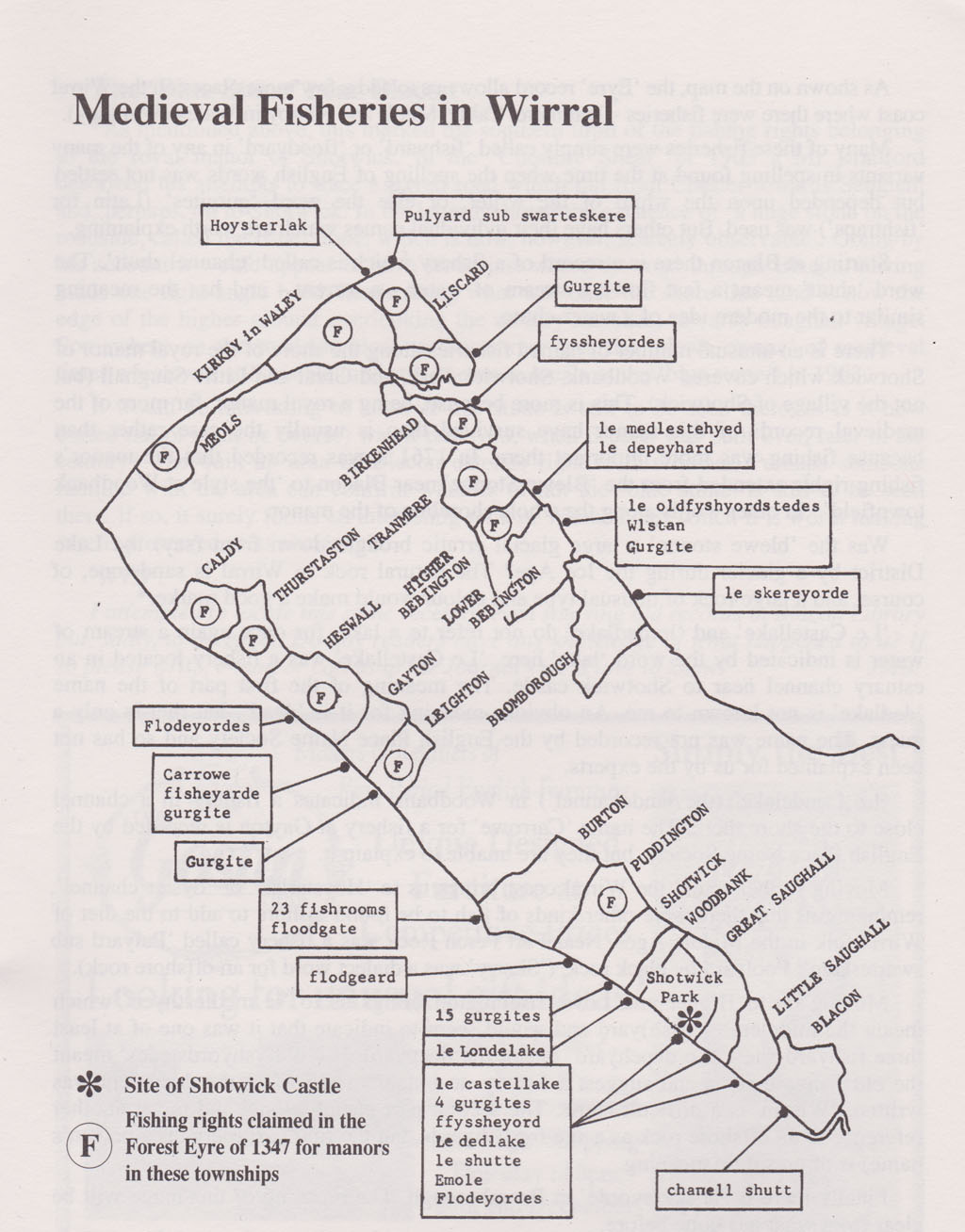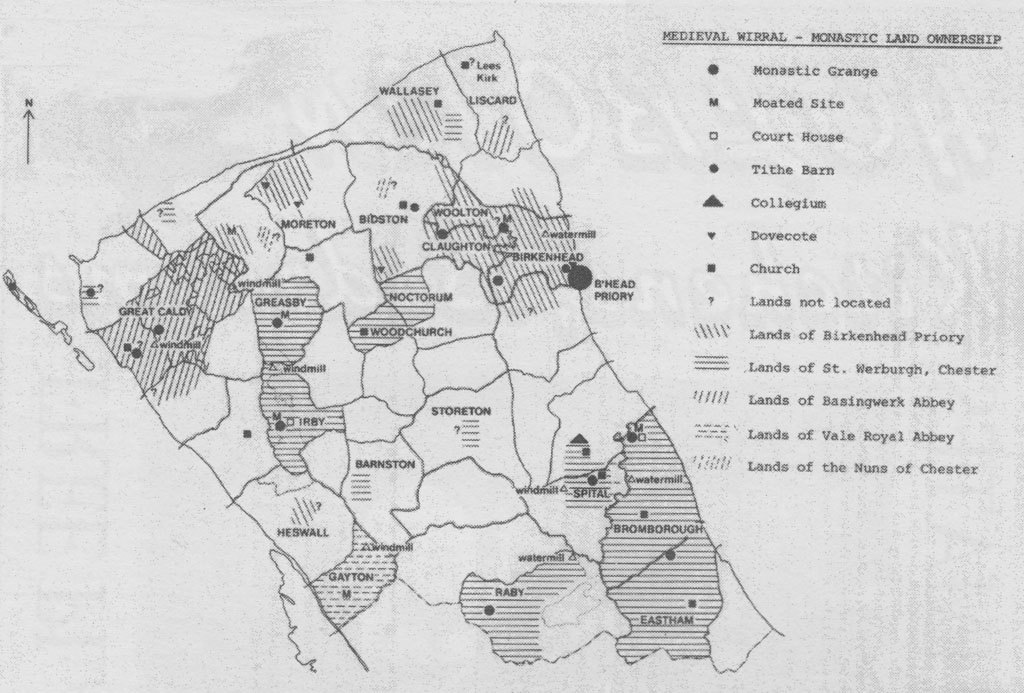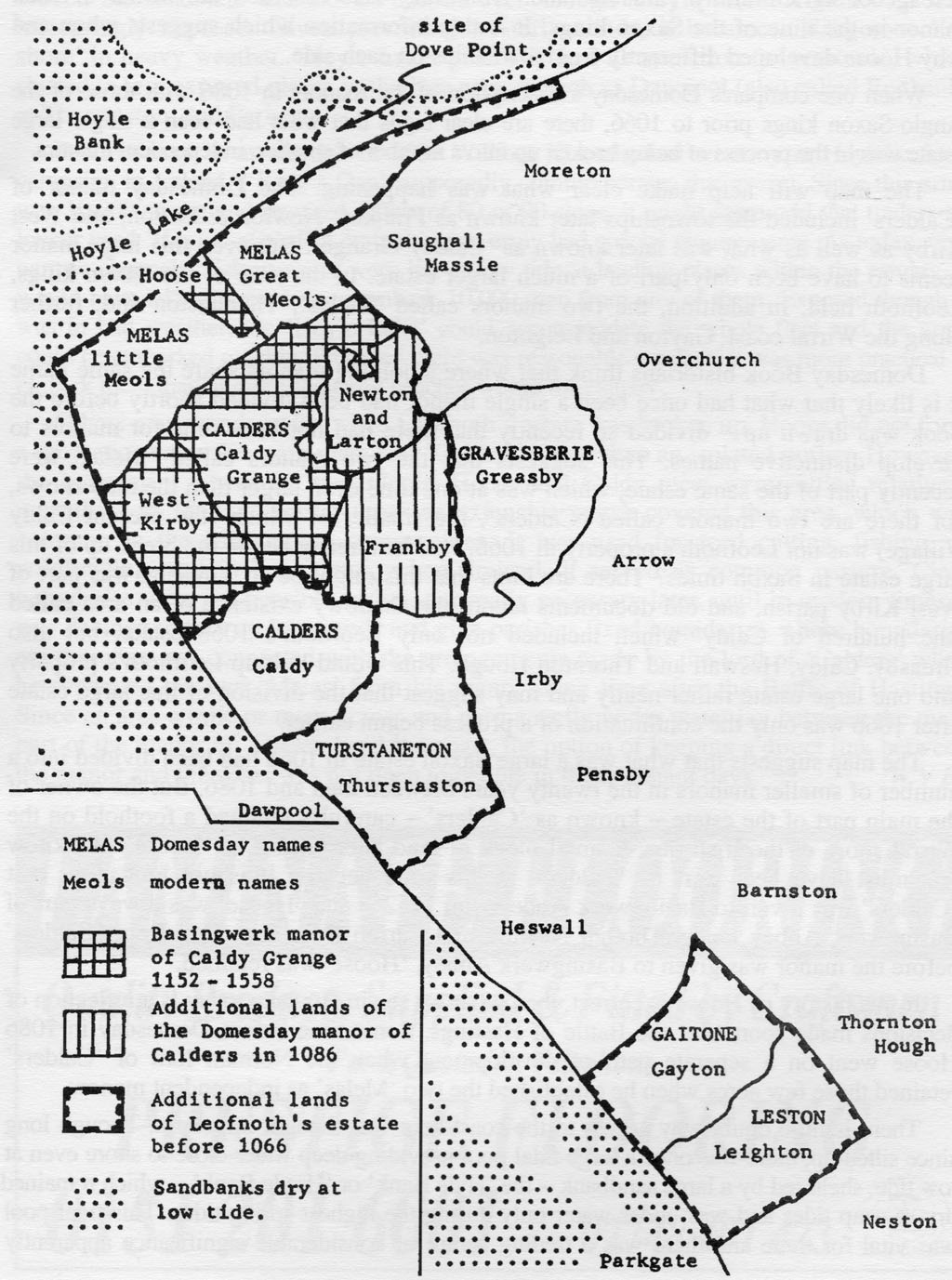
Medieval Wirral
 |
| The documents that have come down to us from those distant times 600 or 700 years ago show that fishing rights belonged to the lords of the manors which lay on the coast. They suggest that the usual arrangement was for the lord of the manor to rent the right to fish along the coast to the tenants of his manor. Several examples suggest that the fishing rights were in early times rented to the whole village. The royal manor of Shotwick rented out ‘a fishery called Emole’ to its tenants in Great and Little Saughall. (The name Emole meant water rent.) A valuation of the property of the Hockenhull family (the lords of the manor of Shotwick village) made in 1282 listed 15 ‘messuages’ (farmsteads) on its rent roll, along with 15 ‘gurgites’ (fishtraps) - one for each farmstead in the village. The ‘Court Book’ of Burton Manor of 1599-1650 listed 23 ‘fishrooms’ which were rented to the manor ’s tenants. Such arrangements suggest that fishing would have been a part-time activity for villagers who might choose in this way to add to what they could grow for themselves on their fanns. There is no sign that anything like deep sea fishing was important. These part-time fishermen would have lacked the equipment, expertise and (having their farms to run) the time to fish out at sea. What were these inshore fisheries like? The usual names used for them were ‘fishyards’ or ‘floodyards’. In Old English a ‘yard’ meant simply an enclosure. Our words ‘yard’ and ‘garden’ have come down to us from this Old English word, but for us they have become restricted to particular kinds of enclosure. The modern equivalent of ‘fishyard’ would be something like ‘fishpen’. The letter F in the map shows fishing rights claimed in the Forest of Eyre of 1347 for manors in these townships. |
 Monastic Ownership of lands |
| One of the glaring items that can be seen on this map is the mysterious area of Wolverton (Woolton) north of Claughton. Where did it go? It did exist, possibly an independent freehold, possibly belonging to Richard de Wolverton. In 1345 the Prior of Birkenhead granted an annuity of 5 marks for lands at Wolverton. Probably buying the land. In 1352 William de Stanley showed a dead duck, shot with a bow and arrow, in the boundaries of Claughton. No culprit was found but the Sheriff was ordered to levy 5 shillings on the township of Claughton, Richard de Wolverton was one of the sureties. |
 |
| Note the small area called Hoose. It covered only 79.5 acres. In Hoose 24 fields were divided upon 9 land owners.Melas became West Kirby & Hoylake and Melas to the east became Meols. Hoose had been monastery land, part of Caldy Grange. |